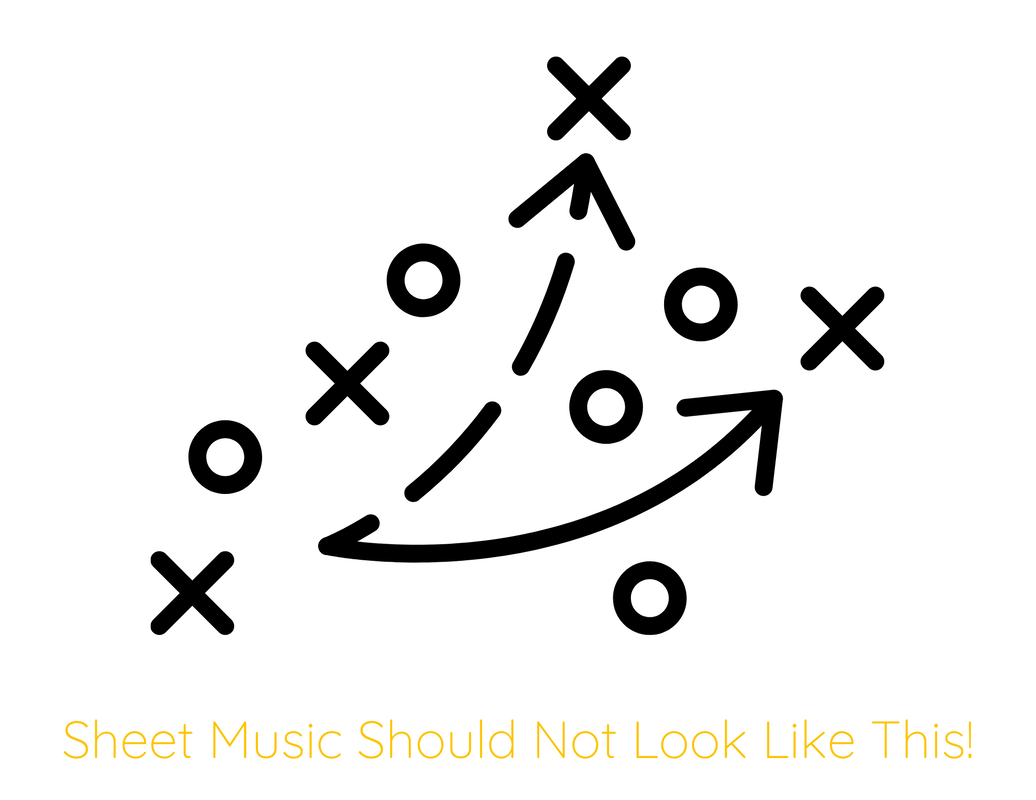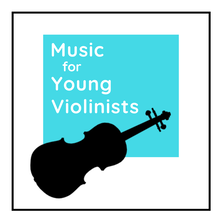|
Sometimes, you don't need a full-scale book, 4 octaves of notes, multiple fingering options and all the extras like relative minor and chromatic scales (though these are all fantastic and have a vital place in pedagogy). Sometimes, you only need a simple scale sheet to teach a simple concept. These G & C major scale sheets are just that - simple. I created them to help a student work on their marching, as a visual guide and to provide basic repetitions to integrate marching while playing, but they can be used for a multitude of beginning-level violin skills. Scroll down to the end of the post to access your PDF files.
0 Comments
Have you ever crossed out so much content and advanced fingerings in a scale book for your students that the sheet music looks like a football play drawing? Young students deserve better resources that are clear to read and appropriate for their level and let them be successful in their home practice.
Teachers deserve resources that maximize every second of a 30-minute violin lesson. Like all of my materials, I developed the One Octave Scales and Arpeggios for Violin out of a need for my studio and to fill a void in the existing resources available for beginning-intermediate-level violinists. I was frustrated that my students did not have an easy-to-read version of foundational content and tired of having to cross out octave ranges and fingerings in the existing scale collections. Click on this link to learn about the One Octave Scales and Arpeggios for Violin. This resource is still on sale for 50% off until the end of the month. A version for viola is also available. Free sample of the A Major bowing patterns and 50% off sale of the entire collection only available thru Sunday, November 8, 2020. Students need repetition to master any skill. The studies in 13 Bowing Patterns for Scales + Harmony are perfect for creating a structure for this success and will benefit the beginning-intermediate level violin player in the following ways:
How to Use the Bowing Patterns: 1st - Do the bowing pattern in the air while singing the scale. 2nd- Play on the violin, mastering one pattern at a time. Do not go on to a new pattern until you are consistently successful with the previous pattern. Some students find it easier to start with the patterns on the second page. 3rd- March a quarter note beat while air bowing and singing the scale. 4th- Play on the violin while marching the quarter note beat.  Should students be able to play better than their teachers? This is a lofty goal, but a fun challenge that propels me forward and is the impetus of the newest resource from Music for Young Violinists: One Octave Scales and Arpeggios It all started when I was 13 years old & my teacher said to me "if I am doing my job right, you should be able to play better than I did at your age." I was stunned because it never occurs to you to advance higher than your teacher. Years later when I started teaching, I took this concept to heart and was determined to advance my students in a more streamlined way than I learned. I view this as a part of the continuum of humanity. As we discover how the brain works and how myelin is developed, then theoretically, we should be able to produce better students than ourselves. That is why I created the One Octave Scales and Arpeggios resource for beginning-intermediate level students. I found my students learning Bach & Vivaldi concertos (Suzuki Book 4 level) and ready for a full, 3-octave scale system to add to their curriculum. However, in my experience even if a student was learning repertoire at this level, their ear had not yet been trained to hear the arpeggio progression so they would struggle with both the learning of correct notes and the advanced shifting required in the upper octaves. There had to be a better way to teach this and this is what led to the creation of the One Octave Scale and Arpeggios resource. This resource helps build a solid foundation by concentrating on the first octave of the arpeggio progressions so the student can master the aural template and basic finger patterns before embarking on more advanced octave/shifting work. One Octave Scales and Arpeggios for Violin is a 31 page eBook designed to give beginning-intermediate level violin players a solid foundation in both scales and arpeggios. Features include:
A peak behind the scenes of the latest M4YV collection: Do you know what finger patterns are? If you have not started finger patterns yet, then today is the day! It will take you about 4 minutes to learn the finger patterns and then 1 minute/day to practice. You will benefit immensely from mastering finger patterns and they will help you build technique, make music theory applicable to violin playing and aid you in learning your repertoire faster. Keep scrolling to learn more. The best way to learn finger patterns without an instructor is thru either a chart or a tutorial video (like the ones below) . I like to teach them in the sequence displayed below and include the less common finger patterns of 1-2-3 and 2-3-4 together as well as all fingers together (half steps) and all fingers apart (whole steps). Once you have these mastered, the next step is to start applying them to your music. Now that you are thinking in terms of half-steps and whole-steps, mark these into your music so the concept starts to click. After a while of using finger patterns, you will notice you learn pieces faster and have improved intonation. Did you catch the fun pop reference? Here are some hints: The sci-fi TV show and movies Star Trek & character Spock Have a violin finger pattern tip?
Please let us know in the comments below, thanks! (in the Keys of A, D & G Major)
I have a young student who plays with a passionate and focused tone and is very devoted in her practicing. She is progressing beautifully but after many years of lessons she still struggles to execute down and up bows correctly. Doing review pieces to fix this issue is counter-productive since she has ingrained incorrect bowing patterns into her old repertoire. Doing the same scale 20x/day would help but does not create a compelling assignment and she would likely zone out and resume playing incorrect bowings.
In an attempt to help her master down and up bows, I created the 7 Bowing Studies for Beginning Level Violin in the Keys of A,D & G Major. Since the focus of these studies is bowing they are kept to one octave and done 3 times in keys with parallel finger patterns (A, D & G Major) for ample repetition of the bow strokes and to keep the left hand as simple as possible. These exercises can be used in two ways: 1- Individually to help with a specific technique needed in repertoire. 2- As a series for students who need more support organizing their down and up bows. Features of this resource include:
|
Categories
All
Archives
February 2024
AuthorHi! It's me, Heather. I absolutely love working on the Music for Young Violinists project and all the many facets: blogging, website, music, teaching materials, freebies, videos, newsletter and giveaway contests. The best part is connecting with you so feel free to drop me a line. You can learn more about me on the "ABOUT" page. Thanks! |
||||||||||||||

















 RSS Feed
RSS Feed
